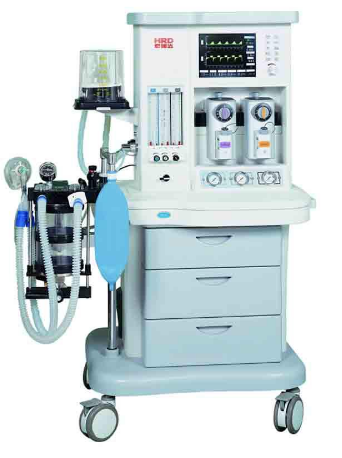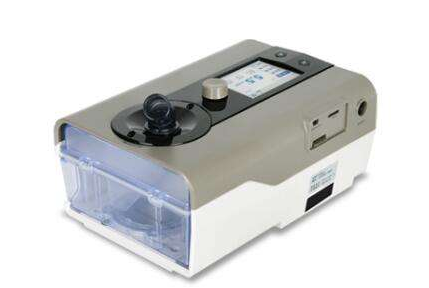Just as there is a real science behind every medical process, there is a science behind the identification of airflow and silicon-based pressure sensors in complex medical devices used to aid in the diagnosis and treatment of disease. Three medical applications using airflow and silicon-based pressure sensors are: anesthesia machines, sleep ventilators, and hospital diagnostic equipment.
Anesthesia Machine
The agents used in anesthesia machines present unique challenges to the device. These chemicals are usually too viscous and can build up inside the equipment. This type of factor must be taken into account when manufacturing such equipment and appropriate recovery measures are taken.
Because medical devices are very important to the patient, choose a sensor that provides excellent sensitivity and accuracy over the life of the device. Selecting a sensor that meets both performance requirements and long-term performance will ensure that the sensor will function properly throughout the life of the medical device. If you choose the right sensor, you can achieve a 10-year sensor life cycle.
The engineer should consider the patient's respiratory rate. The patient's range may range from an unhealthy, slow-breathing adult to an adult with good health, rapid breathing, and high lung capacity. The sensing portion needs to be very sensitive in order to properly measure the patient's inhalation and exhalation as well as the anesthetic gas delivered to the airflow. Therefore, two (and sometimes three) airflow sensors are used to measure a particular pneumatic subsystem. The designer should probably set up a dedicated airflow sensor for all important subsystems in the device.
Because the anesthetic and high humidity add up to the harsh environment of the sensor, it can be considered that the differential pressure sensor in the exhalation circuit is superior to the airflow sensor. Differential pressure sensors are more adaptable to gaseous media contamination from moisture, anesthetics, and other materials.
Where high pressure delivery is required, or where the sensor requires direct exposure to concentrated oxygen or anesthetic, a sensor that is isolated from the media should be used. At this point, a stainless steel pressure sensor isolated from the media may be optimal because it is more durable.
If you need a portable device, you should consider using a low-power airflow and pressure sensor, which reduces the size of the power supply you need and helps limit the total weight of the unit. Mounting the sensor to the manifold of the airflow channel can help reduce design size and weight.
Another consideration is the output. Digital outputs, such as the I2C and SPI protocols, optimize sensor resolution and integration with the microprocessor. However, there is still a need for analog output, mainly because in some safety circuits, software is not allowed to participate due to the need for rectification. The user may wish to use the raw output of the sensor to trigger an alarm or safety condition. The ability to provide both digital and analog options is important.
Finally, the response time of the sensor is critical to the effective delivery of the anesthetic to the patient. Using current technology, anesthesia machine manufacturers are able to achieve a response time of 1 ms.
Sleep ventilator
For a sleep ventilator, when it comes to the total error band, it is usually more of a patient's comfort and convenience, and the performance requirements are not critical. Because they are typically used in conjunction with humidifiers, they need to operate at higher humidity and maintain stable performance. They must be durable because they are often used by a variety of people in a home environment.
User requirements for equipment are primarily focused on accuracy, stability, portability and unit size/weight. The noise requirements are also important because the device is used during sleep. A low pressure drop airflow sensor is required because if the pressure drop is too high, the motor will work more strongly (pressure drop equals the impedance in the sensor), increasing noise and shortening the life of the motor.
So engineers should choose sensors that can sense differential pressure or airflow at very low rates. The sensor should be able to measure the peak of the patient's breathing, or the turning point between inhalation and exhalation. For more complex sleep ventilators, airflow sensors are sometimes chosen instead of pressure sensors because the ventilator needs to be more sensitive at low airflow levels.
Once the pressure, airflow, and media requirements are determined, consideration should be given to accuracy and stability requirements, including the total error band. Household sleep ventilators must be durable because external factors can affect unit performance.
For price reasons, enhanced digital products are often chosen. Adding components later to adjust the signal size is more expensive than buying a sensor that has been amplified. At the same time, if you do this, the time for integration will be shorter, which allows designers to implement sensors faster and bring the final device to market faster.
Depending on the type of sleep ventilator, mechanical requirements (such as size, mounting, and drenching) may also have an impact on the design of the device, as customers expect smaller, aesthetic, and portable devices. Customer calibration functions may also need to be considered, especially for CPAP (Continuous Positive Airway Pressure) applications to maximize product performance to best match the patient's breathing pattern.
Hospital diagnostic equipment
Hospital diagnostic equipment includes mass spectrometers, chromatographs (for example, for gas, liquid, and high performance liquid chromatography), laboratory automation systems, and analyzers, such as for blood, hematology, immunoassays, and clinical chemistry. instrument.
High resolution, high precision and high stability are key factors to consider when selecting sensors for hospital diagnostic equipment. Equipment needs to be able to detect even the smallest amount of material. Therefore, diagnostic devices typically have the highest resolution requirements, typically 16 bits or higher. The accuracy and stability of the sensor is important for obtaining accurate data, and accurate data is critical to laboratory results and is directly related to the patient's life.
Determining the full range and increment of pressure and airflow to be tested is the primary factor to consider. The application of sensors in hospital diagnostics may also require compatibility with media other than clean, dry air. In some diagnostic equipment, gases released from plastics or adhesives, although in small quantities, can contaminate the sample and bias the test results. Accuracy, especially for linearity and hysteresis errors, is important. Since the sensitivity of the entire system is related to the sensitivity of the sensor used, the hysteresis should be minimized. The 0.25% accuracy error is optimal (non-linearity and hysteresis error), while 0.5% is usually the maximum allowed.
As mentioned above, high resolution is critical, which is why users of diagnostic and analytical equipment may choose un-amplified sensors to get as much core/original sensor output as possible and create compensation and amplification algorithms themselves. the reason. Some sensor manufacturers offer products with amplification through high-resolution A/D converters. Note that the high resolution A/D converter is not the resolution of the sensor - you need to consider the resolution of the sensor itself. If the resolution of the sensor is low, the extra bits of the A/D will only provide additional useless data.
Stability is very important because drift can accidentally affect the sensor's readings. If the sensor drifts after the device is made (calibration is done before the device is shipped), the result will be biased. During the manufacturing and installation of the sensor, the sensor must be considered to prevent the effects of thermal stress and mechanical stress, as this will affect the stability of the device performance. In hospital diagnostic applications, 0.5% or less is an acceptable maximum for errors related to drift and instability.
Unlike other medical applications, size is not a particularly critical factor for diagnostic equipment because most of them are bulky, inconvenient to move and are placed in the lab. Resolution, accuracy, and stability should be considered first, followed by physical factors such as output, size, mounting, hole drilling, and power requirements.
Round Male Pin Header Connectors
Round Male Pin Header Connectors,Straight Pin Male Pin Header Connectors,Straight Male Pin Header Connectors,Pitch Pin Connector
Dongguan ZhiChuangXing Electronics Co., LTD , https://www.zcxelectronics.com